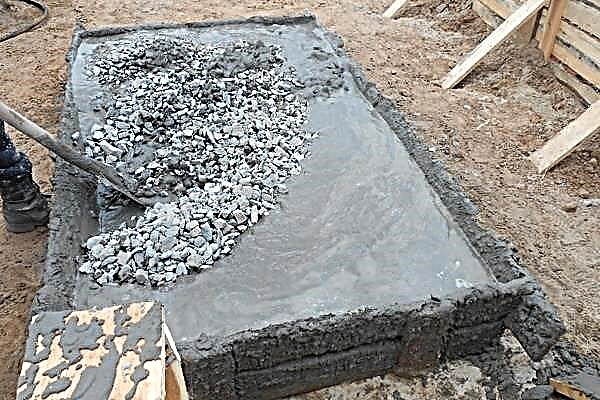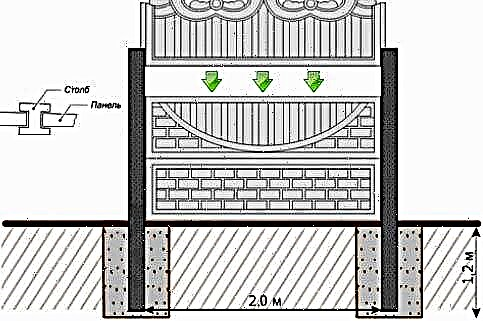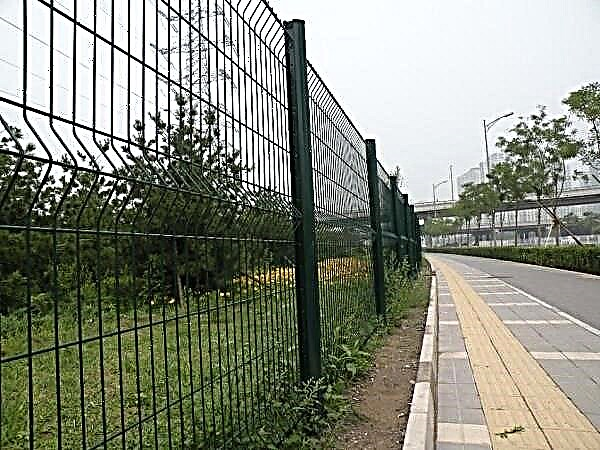The proportions of cement for different types of mortars will be interesting first of all for non-professional developers and repairmen. Professional builders, as a rule, prepare concrete solutions “by eye”, and most often order their delivery at the nearest concrete plant.

Private developers, however, often prefer to save on "everything and everything", so the proportions of cement in mortars for various purposes will be useful primarily to those who prepare concrete building materials on their own.
The main types of mortars
Depending on the purpose, cement-based mortars are divided into the following widely used types:
- Heavy concrete of different grades.
- Masonry mortars.
- Plaster mortars.
- Mortars for the construction of floor screed.
- Repair solutions.
The listed different building materials have one common factor - in the composition of all the listed building materials there is cement, which is a “binder” that has no analogues.
Given that readers of the article will benefit from practical information of the following order: proportions of sand and cement for screed, proportions of sand and cement for concrete, proportions of cement for screed, proportions of cement for masonry, as well as the ratio of sand and cement for plaster, we will consider it step by step with the indication specific numbers.
Sand to cement ratio for floor screed
The floor screed can be used as the basis for a finished flooring made of boards, plywood, laminate, parquet, solid wood, USB boards, ceramic tiles, mosaics, porcelain stoneware and soft materials (carpet, linoleum, carpets and rugs).
Also, the floor screed is used as a “finishing” floor covering in household buildings and rooms with high humidity: bathrooms, bathrooms, saunas, baths and kitchen rooms.
On the Internet and private conversations, you can read and hear a variety of options on how to properly spread cement and sand proportions for screed. At the same time, there are practical rules and proportions for preparing the solution, which can be used for the vast majority of cases.
For 99% screed options, the use of cement-sand mortar grade M150 or M200 based on the most affordable cement grade TSEM I 42.5N PTs or TSEM I 52.5N PTs is recommended. The outdated designations of these brands of parliaments are M400 and M500.
The ratio of cement and sand for the floor can be seen in the table:
| Grade of solution | Proportion of cement M400 | Sand proportion | Mixer Ratio |
| M150 | 1 | 3,0 | 1,3 |
| M200 | 1 | 2,5 | 1,0 |
| Grade of solution | Proportion of cement M500 | Sand proportion | Mixer Ratio |
| M150 | 1 | 4,0 | 1,3 |
| M200 | 1 | 3 | 1,0 |
The ratio of cement and sand for concrete
The concept of "concrete" combines a number of different building materials prepared on the basis of different cements and different fillers. Without going into details, it is worth noting that in private construction in 99.9% of cases heavy concrete of certain grades is used.
Therefore, information on special types of concrete will be informative, but it does not have practical value. Therefore, in the framework of this article, the ratio of the main components of heavy concrete of demanded brands that are widely used in private construction is given.
Among the main brands of heavy concrete are the following items: M150, M200, M300 and M400. These are the most popular options, covering 99.9% of the needs of private developers. The following table of the ratio of components that must be used to prepare 1 m3 of the solution tells how to prepare the indicated grades of concrete.
| Concrete grade | Cement CEM I 42.5N PC, kg | Sand kg | Crushed stone, kg | Water, l |
| M150 | 215 | 735 | 1135 | 190 |
| M200 | 255 | 715 | 1125 | |
| M300 | 335 | 670 | 1105 | |
| M400 | 420 | 625 | 1085 |
| Concrete grade | Cement CEM I 52.5N PC, kg | Sand kg | Crushed stone, kg | Water, l |
| M150 | 190 | 755 | 1135 | 190 |
| M200 | 225 | 735 | 1125 | |
| M300 | 290 | 705 | 1105 | |
| M400 | 355 | 675 | 1085 |
The consumption of components per 1 cubic meter of concrete is a universally recognized norm and a universally recognized equivalent. If according to the construction conditions it is required to prepare a quantity of concrete less than 1 m3, you can take the material consumption per 1 m3 for 100% and decide the proportion to find out the required value in kg.
For example. It is necessary to mix concrete grade M150 in an amount of 0.3 m3 based on cement M400 1 m3 - 100%, 0.3 m3 - X%. We decide the proportion: 0.3x100 / 1 = 30% (0.3). Multiplying the tabulated values of the amount of materials by 0.3, we get: 64.5 kg of cement, 220.5 kg of sand, 340.5 kg of crushed stone and 57 liters of water, it is necessary for the preparation of concrete grade M150 based on cement M400.
Proportions of masonry cement
In general, mortars for brick, foam block, cinder block, limestone or limestone masonry include components: cement CEM I 32.5N PC (M300) or cement CEM I 42.5N PC (M400), fine sand, lime and water.
In this case, lime is added to give strength and “warmth” to masonry joints and is an “optional” component. However, if the developer wants to get high quality (strength, durability and thermal insulation) of the masonry, it is worth going to small additional costs and preparing the mortar for masonry in accordance with the table of the number of components per 1 m3 of masonry mortar:
| Brand of masonry mortar | Cement CEM I 42.5N PC (M400), kg | Sand kg | Lime kg | Water, l |
| M50 | 170 | 1445 | 205 | 230 |
| M75 | 235 | 1395 | 165 | |
| M100 | 290 | 1365 | 133 | |
| M150 | 380 | 1305 | 75 |
| Brand of masonry mortar | Cement CEM I 32.5N PC (M300), kg | Sand kg | Lime kg | Water, l |
| M50 | 220 | 1410 | 175 | 250 |
| M750 | 305 | 1365 | 125 | |
| M100 | 370 | 1305 | 85 | |
| M150 | 485 | 1235 | 15 |
The ratios of cement and sand for laying brick, cinder block, foam block, shell rock and limestone given in the table, using the technology of "proportions", can be recalculated for less than 1 m3 of material volume.
The ratio of cement and sand for mortar
Manufacturers and distribution networks offer consumers a wide selection of ready-made dry stucco mortars of various grades, for various tasks and operating conditions. At the same time, given the high cost of dry mixes, prudent developers prefer to buy sand and cement separately, prepare the stucco on their own and save at least 50% of the price of the purchased mortar.
The only question that needs to be answered: how to build cement for plaster with sand and water? In general, cement-sand mortars of the following grades are used for plastering: M50, M100 and M150. Scope of solutions:
- M50. Grouting the surface layer for applying the topcoat.
- M100. Interior decoration of walls operating in standard conditions of air humidity.
- M150. Exterior finish of facades, plinths and wall decoration working in conditions of high humidity.
How to properly mix cement with sand for various grades of cement-based plasters CEM I 42.5N PC or CEM I 52.5N PC in the amount of 1 m3 “suitable”, see the following table.
| Mortar grade | Cement CEM I 42.5N PC, kg | Sand kg | Water, l |
| M50 | 225 | 1430 | 285 |
| M100 | 335 | 1345 | |
| M150 | 450 | 1265 |
| Mortar grade | Cement CEM I 52.5N PC, kg | Sand kg | Water, l |
| M50 | 210 | 1445 | 285 |
| M100 | 305 | 1375 | |
| M150 | 400 | 1300 |
It is worth noting that the above table values of the ratio of the components of the solution are valid, including the ratio of sand and cement for tiles in terms of the brand of mortar for rooms with high humidity (M150).
Ratio sand cement water for repair
The term "repair" work "means the sealing of cracks in the walls, the restoration of the collapsed part of the external or internal plaster, the restoration of the walls of the building made of slag concrete and other similar works.
Given the small amounts of “repair” material, the following cement: sand: water ratio can be applied here, ideal for all possible cases: 1 part cement CEM I 42.5N PC or CEM I 52.5N, 3 parts sifted sand and 0 5 parts of water. Repair material prepared according to this recipe has proven its effectiveness and durability.
Conclusion
Modern building technologies provide other options for mortars based on different cements intended for the construction of various structures: underground tanks for storing oil products and water, erection of hydraulic structures, column columns, etc.
In this case, the builders are guided by the requirements of the project technical documentation, which indicates the brand of concrete or mortar. The information of this article is primarily intended for developers who do not have a building education and construction experience. At the same time, the figures and calculations presented here are consistent with practice, therefore, they can be used to solve the problem of how to build cement with sand, gravel and water.



